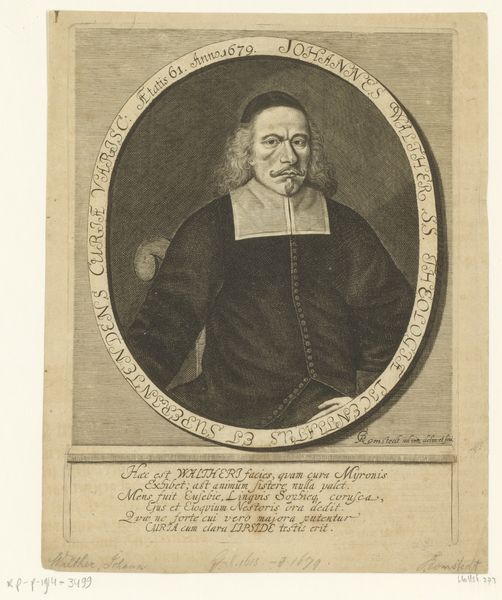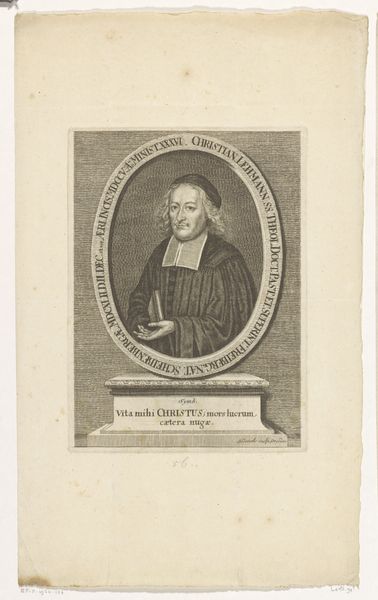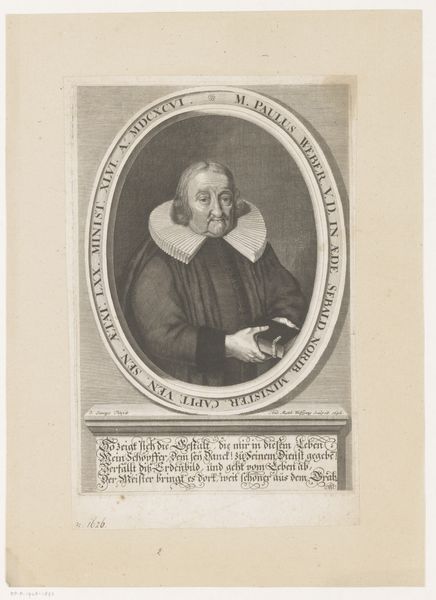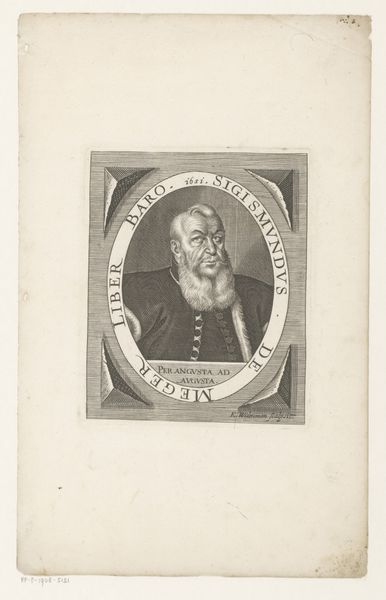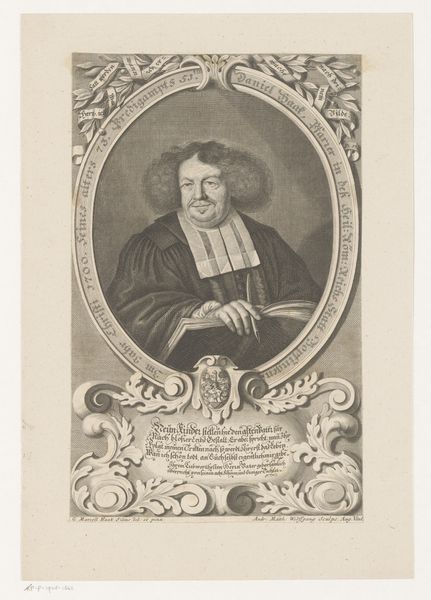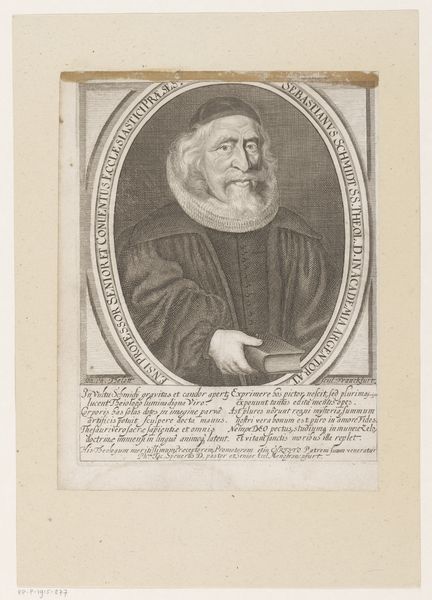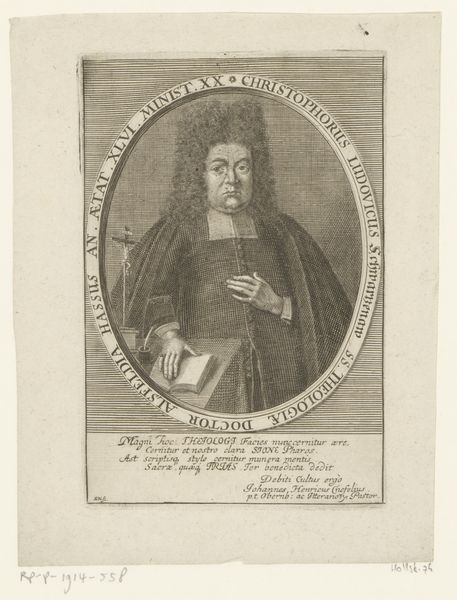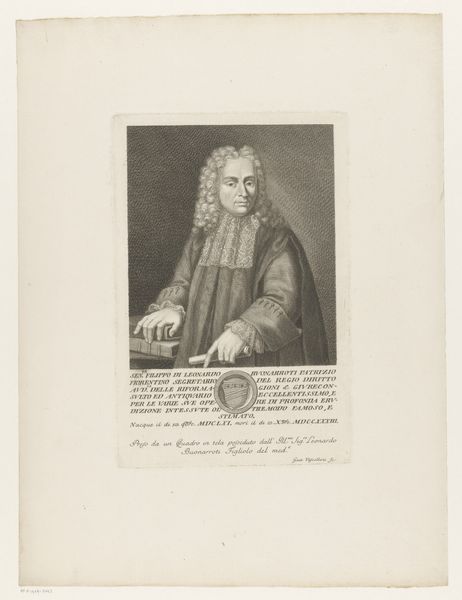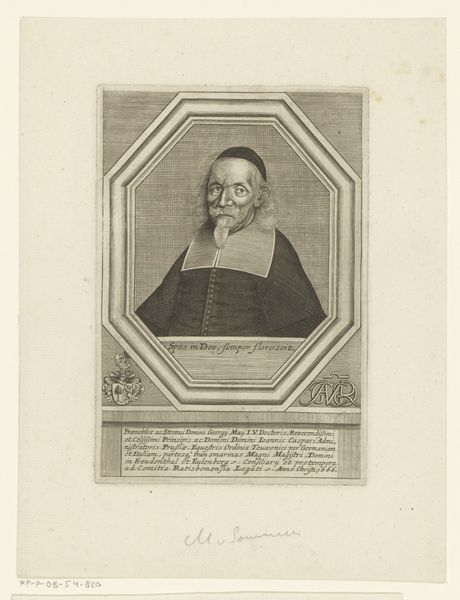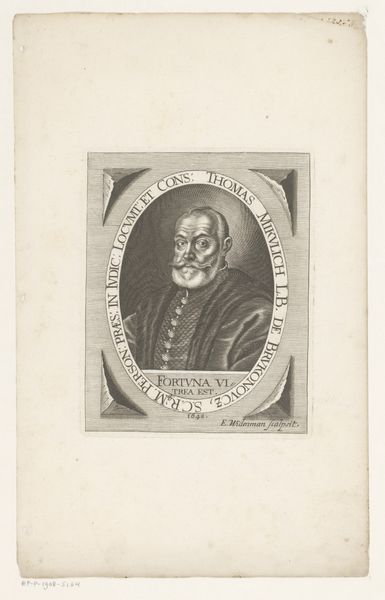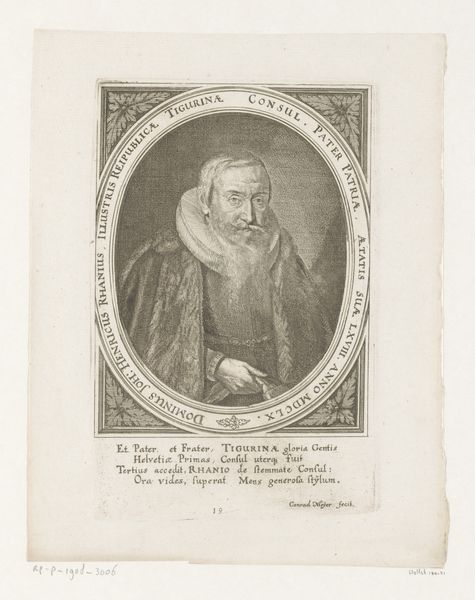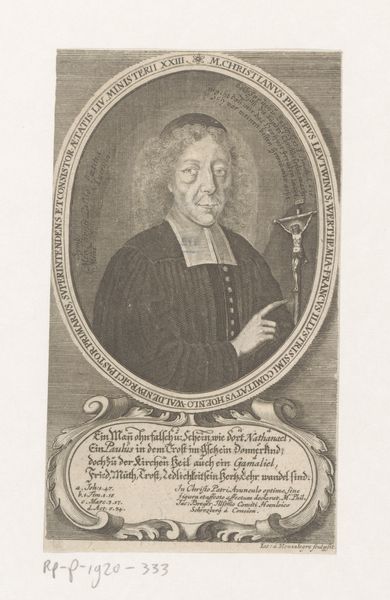
print, engraving
#
portrait
#
aged paper
#
toned paper
#
baroque
# print
#
old engraving style
#
figuration
#
engraving
Dimensions: height 162 mm, width 83 mm
Copyright: Rijks Museum: Open Domain
Editor: This is Johann Tscherning's "Portret van Stephan Pilarik," created sometime between 1689 and 1729. It's an engraving, giving it this wonderfully textured feel. The figure seems very formal, almost austere. What catches your eye when you look at this piece? Curator: As a materialist, I see an object deeply embedded in its means of production. The engraving process itself is crucial. Consider the labor involved in creating these precise lines. The consumption of printed images like this would have been directly tied to specific social and political networks. Who was the target audience, and how does that impact our reading of Pilarik’s portrait? Editor: So, you are saying we should think about who would have bought this portrait, and why? Curator: Precisely. Was this meant to commemorate Pilarik, to disseminate his image, or perhaps both? How does the act of reproducing his image through print change the way he is perceived? The inscription certainly alludes to the context in which he lived, but I wonder what the engraver hoped to convey about their relationship. Editor: That's a perspective I hadn’t fully considered. Focusing on the 'how' and 'why' it was made, rather than just 'who' is in the portrait, changes my understanding of the artwork entirely. It speaks to the socio-economic dynamics present. Curator: Indeed. And the 'aged paper' that we now see? That's a material reality marking the passage of time, altering our interaction and the market value of Tscherning's artwork. Editor: This makes me realize that what appears on the surface is deeply rooted in process, labor, and distribution. Thanks!
Comments
No comments
Be the first to comment and join the conversation on the ultimate creative platform.
